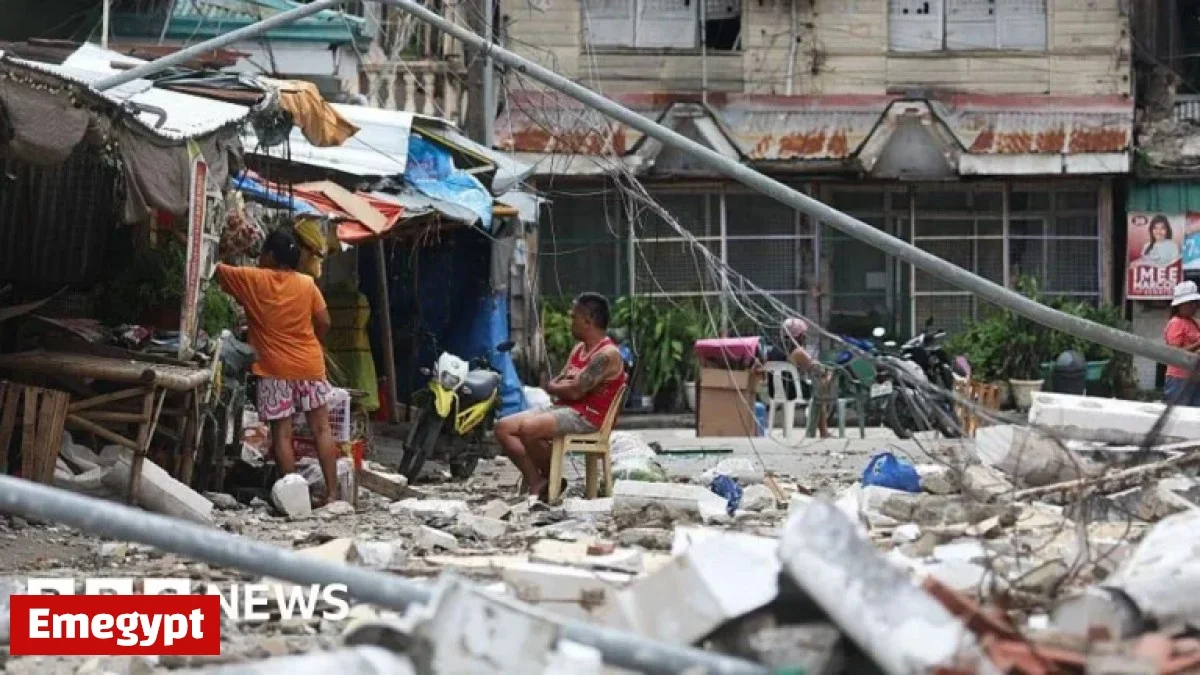
Earthquake Devastates Central Philippines: Cebu Declares State of Calamity
Powerful Earthquake Strikes the Visayas Region
A devastating 6.9 magnitude earthquake in the central Philippines has claimed the lives of at least 69 people and injured dozens more. The earthquake struck late Tuesday night, with the province of Cebu bearing the brunt of the damage. Authorities swiftly declared a state of calamity as thousands were forced to spend the night outdoors amid continual aftershocks.
Cebu Residents Face Power and Water Shortages
In the aftermath, residents of Cebu experienced widespread disruptions, with power and water supplies severely affected. The eerie cries of traumatized children filled the air, as one local described the harrowing scene to international reporters. The earthquake follows closely on the heels of twin typhoons that ravaged the country just over a week earlier, resulting in more than 20 fatalities.
Bogo Town: The Epicenter of Tragedy
Bogo, a small town on one of the Visayas Islands, was closest to the earthquake’s epicenter. The area is now witness to grim scenes of body bags lining the streets and numerous individuals being treated in makeshift tent hospitals. Authorities warn of extensive damage and are soliciting the assistance of medical volunteers for the injured.
Infrastructure Damage Hampers Emergency Response
The seismic activity has caused widespread infrastructure damage, including buckled roads, cracked bridges, and downed power lines, complicating rescue and aid efforts. Among the deceased, seven hailed from a village constructed for Typhoon Haiyan survivors—a poignant reminder of past tragedies.
Ongoing Relief and Rescue Efforts
Emergency response teams are prioritizing search and rescue efforts while working to restore electricity and deliver essential relief supplies. In the wake of continuous aftershocks, which included a 4.7 magnitude tremor felt in Cebu and Leyte Islands on Wednesday evening, officials remain on high alert. Fortunately, this aftershock resulted in no further casualties.
Historical Churches Under Threat
Given Cebu’s historical significance as one of the earliest Spanish colonies, several ancient churches face structural threats. The local archbishop has advised worshippers to avoid churches until structural evaluations confirm they are safe.
The Philippines: A Region Prone to Natural Disasters
The Philippines, located within the geologically active “Ring of Fire,” frequently experiences earthquakes due to tectonic movements. Situated on the edge of the Philippine Plate, the region endures significant friction with the Eurasian Plate, resulting in frequent seismic activities. Additionally, the nation’s geographic location makes it susceptible to annual typhoons originating from the Pacific Ocean.
Following recent tropical storm Bualoi and typhoon Ragasa, which claimed several lives and displaced hundreds of thousands, the need for rigorous disaster preparedness and response is more critical than ever. While official casualty figures and assessments continue to trickly from the national disaster agency headquartered in Manila, authorities brace for potential adjustments in the death toll.
